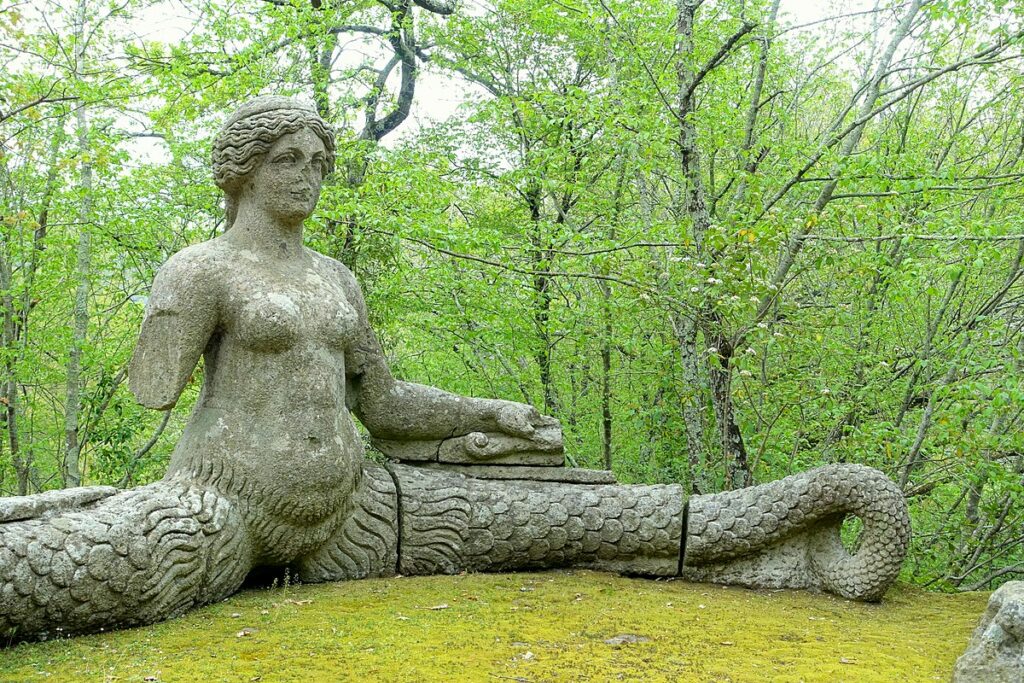Echidna The She-Viper – Mother of Monsters
Echidna is a somewhat obscure, but nevertheless fearsome monster in Greek mythology. Homer’s The Iliad and Hesiod’s poem Theogony are some of the oldest writings to feature her, and have therefore been influential in shaping Echidna’s modern narrative. Other than what is established in The Iliad, Theogony and in later texts by other authors, not much is truly known about Echidna.
Echidna was a monster in Greek mythology that was half-woman and half-snake and resided alone in a cave. She was the wife of the terrifying creature Typhon and the mother of several of the most renowned monsters in Greek mythology.

Echidna’s Origins
Because she is mostly absent from ancient texts, Echidna’s origin story is rather murky. However, most authors seem to agree that her father was likely the sea god, Phorcys. Echidna was said to have been born in and spent most of her life in the same cave, only leaving to snatch up and devour the occasional unsuspecting traveller.
Echidna’s Life and Death
Most of the stories about Echidna deal with other, more prominent mythological figures. There are no stories of Echidna’s own deeds. She existed mostly as a background character, a sidekick, or an antagonist. She is best known for her romantic relationship to the hideous giant Typhon and as the mother of their many monstrous children. Some of these children went on to be the most notorious and deadly monsters in Greek mythology.
Although the identities of her children can vary based on the author, most agree that she was at least the mother of Orthrus, Cerberus, and Hydra. Some authors also credit her as the mother of the Chimera, the Nemean Lion, a huge lion, terrorized the land of Nemea, Ladon, and the Caucasian Eagle who tore out Prometheus’s liver.
Immortality and Fate
According to Hesiod, Echidna did not age nor could she die a natural death “all her days.” Despite this, her immortality is not to be mistaken for invincibility. The goddess Hera recognized the danger Echidna posed to unsuspecting travelers and sent the hundred-eyed giant Argus Panoptes to kill her. Argus sneaked into Echidna’s cave and slayed her as she slept.
Homer’s Iliad implies another fate: Typhon and Echidna, tired of being outcasts and outraged by the deaths of their children, waged war against the Olympians. To punish them for their rebellion, Zeus banished the couple underground.
The authors Callisthenes, Nonnus, and Pindar further specify that the two were imprisoned beneath the volcanic Mount Etna and hurl fire out of the earth to this day.
Art & Culture
There are no confirmed ancient artistic depictions of Echidna. The most accepted image of her is shaped by Hesiod’s description of a beautiful serpent woman living in a cave, but authors like Aristophanes contradict this and describe her as a hideous beast with a hundred heads living in the underworld.
Echidna Facts
- The Echidna, an Australian mammal, was named after the Echidna of Greek Mythology. This is because it exhibits both reptilian and mammalian qualities.
- One theory on Echidna’s genealogy places her as the daughter of Tartarus and Gaia, which would make her and her lover Typhon siblings.
- Echidna is also known as the Eel of Tartarus (a possible reference to her father), Serpent Womb, and Mother of Monsters.
- Most authors believe that Echidna’s mother was an Oceanid, or a sea nymph.
- Echidna’s killer, Argus Panoptes, was a sworn servant of Hera. The command to slay Echidna was merely a secondary task. His main duty was to guard Zeus’s lover Io and to to make sure Zeus kept his distance from her.
- In Ovid’s Metamorphoses it is said that Echidna is capable of producing a poisonous venom with the power to induce madness.
- Because of Echidna’s taste for raw human flesh, Daniel Ogden, Professor of Ancient History at the University of Exeter, suggests that she may have had the head of a snake to more easily devour her prey. This contradicts the generally-accepted image of Echidna, who is usually portrayed as having the head and torso of a beautiful woman but the tail of a snake.
- The Homeric Hymns (a series of anonymous writings in the style of Homer) equate Echidna to the Python Delphyne, a serpent sent by Gaia to guard the Oracle of Delphi. In this account, the Python is born of the rotting sludge left behind after the Great Deluge and slain by the god Apollo.
Link/cite this page
If you use any of the content on this page in your own work, please use the code below to cite this page as the source of the content.
Link will appear as Echidna: https://greekgodsandgoddesses.net - Greek Gods & Goddesses, February 10, 2017